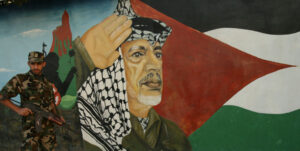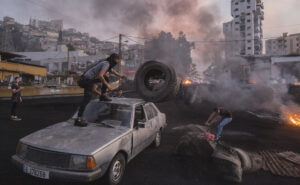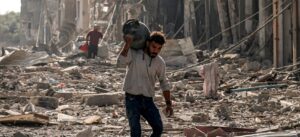For a brief moment, when I was younger, I found myself in Jerusalem. By day I studied the Talmud with my teacher, and by night I wandered its streets.
I would veer into the dark alleyways of the Old City, find myself at the Western Wall, flooded with light, then turn into the tunnel-like paths of the Muslim Quarter. Here, I met with some of the more committed boys from the tougher, stricter yeshivas. We would clamber onto roofs, to find new places to see the Temple Mount. They would take me deeper into the warren, full of excitement, to their synagogues filled with song. They would pray by the tombs, speaking at dawn of David, Solomon and their lovers in the Book of Kings, as if they could see them.
Criss-crossing Jerusalem like this — its street names recalling biblical heroes, prophets and saints — is to imagine an ancient, continuous city. But this is an illusion.
The real Jerusalem, as noted by the Israeli historian Yair Wallach, is not only a capital of ancient sites but a city in which over 99% of its buildings date from after 1900. This makes Jerusalem, with its almost a million people, younger than both New York and London.
Archaeologists navigate Israel by way of mounds, tels or tells in Hebrew or Arabic, where successive civilisations lie on top of each other. Modern Jerusalem is not dissimilar. Over the past century and a half, it has been at least three very different cities: Ottoman Jerusalem, British Jerusalem and Zionist Jerusalem. Today, by contrast, we have an increasingly Haredi-Palestinian conurbation that reflects a one-state reality — a place where Israeli thinkers see either a dystopian future or signs of hope.
Arriving in Jerusalem, usually by traffic jam, is to pass red-roofed suburbs, densely packed over the wooded valleys on the hills. The land, you feel, is full. But it is hard to stress how small and remote it once was.
In 1856, my great-great grandfather’s brother Rabbi Shlomo Yahuda set off from Baghdad, to build a yeshiva in Jerusalem. He travelled for 40 days on camelback, and he was not alone. For millennia, the prayers of the Jewish people had been directed there, but only with the beginnings of secure travel, in a world of Victorian shipping lines, did it stop being an idea — and become a real, reachable place. These pious dreamers arrived in a poor town of less than 20,000 people.
Rabbi Shlomo’s Jerusalem was a walled village. Years later, his son-in-law would recall the “the desolate and forlorn state of the city” in the mid-19th century. There was nothing beyond its Ottoman walls and within them life was marked by hunger, brigands and a lack of work. Months would go by without matches.
Though it quickly acquired a pious Jewish majority, life was dominated by Muslim notables such as the al-Husaini and the Nashashibi families. Progress was slow but steady until the turn of the century. Palestinian diarists, such as Khalil Sakakini, recall a city of cafes, photo shops and literati circles opening to the world thanks to its new railway. Yet this Ottoman Jerusalem horrified Theodor Herzl, the founder of modern Zionism. It was, for him, a place of “hideous, miserable, scrambling beggary” that he fantasised about turning into an “airy, comfortable, properly sewered, brand new city around the Holy Places”.
Within two decades, British Jerusalem, formed abruptly by war, created another place entirely. No longer growing chaotically, in a way that might have come to resemble any other Middle Eastern city, the colonial authorities gave it its enduring design restrictions and its faux antique, stone-clad look. Herzl would have approved.
Rabbi Shlomo’s family tells the story of a Jewish community transformed. His grandson, David Yellin, shocked his rabbis by entering the secular Alliance Israélite Universele school. He then switched from Arabic and Yiddish to Hebrew at home and moved from the Ottoman Parliament to the Mandate’s Jewish Assembly, becoming a champion of Hebrew education. His story and Jerusalem’s was the same: secularisation.
This created a sociologically new city. Where late Ottoman Jerusalem had been a place of Ladino and mostly Yiddish-speaking Jews, the Mandate’s Jerusalem would be dominated by secular, Hebrew-speaking Jews. This was the city of novelist Amos Oz’s childhood, where Jewish immigration brought first the bookish high culture of Central Europe, then a new Hebrew University of Jerusalem co-founded by Albert Einstein, before a rush of refugees from Nazism. A city not only of refugee intellectuals such as Martin Buber, but of a growing modern middle class with cinemas and children’s clothes stores.
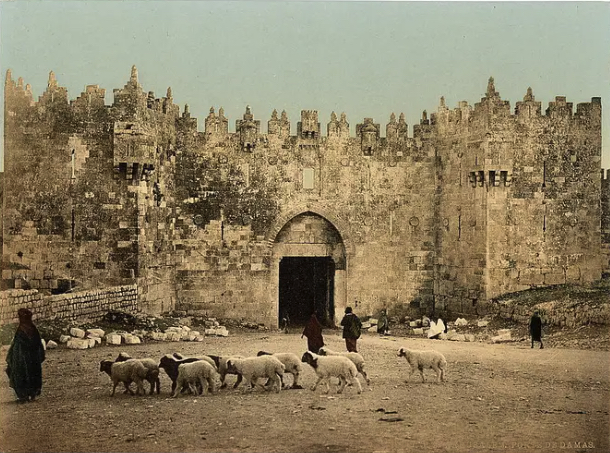
It was also becoming a violent city. The Israeli-Palestinian conflict truly began in Jerusalem when Arab riots and killings erupted in 1929. Their cause was a growing Jewish presence at the Western Wall, where Muslims believe Mohammed tied his steed before ascending to heaven from the mount above. Jews, many felt, had no right to it. But Palestine was transforming into a new country as Jewish refugee immigration surged.
This stirred the great Arab Revolt in 1936. Something had ruptured. Rabbi Shlomo’s grandsons paid the price. David Yellin’s son was murdered, while his cousin Abraham Shalom Yahuda found his Ottoman-era friendships powerless in the face of violence.
By now, literatis such as Khalil Sakakini who had once been exiled by the Ottomans for sheltering a Jewish immigrant, now praised violence, writing to his son after an attack on civilians: “Who would believe there are such heroes in Palestine? What a great honour it is, my Sari, to be an Arab in Palestine.”
British Jerusalem was tense, but no warzone. It was still deeply Levantine and cosmopolitan, where the city’s Arabs, some 20-40% of its population, had its own large bourgeoisie. This made a different kind of city from the occupation-walled, isolated and fiercely Muslim Palestinian East Jerusalem of today.
This was the city of the childhood of Edward Said, where Arab merchant families like his own set the tone. These had wide horizons and occasionally socialised with and often employed Jews, such as the midwife who delivered Edward Said in 1935. It was also still a very Christian city, where being Arab was far from synonymous with being Muslim. Roughly half of the Arabs in the city were Christian like the Saids. Today, they make up less than 2%.
But from a distance, neither were the worldly Said or Yahuda families that different. Life was separate, not segregated. As late as the war, a bourgeois address book contained a few names from the other side one might call. Nor did the city have an Arab East and a Jewish West. In fact, tens of thousands of the wealthiest Arabs lived in what is now the core of elite West Jerusalem and many Jews lived in poor neighbourhoods now firmly in East Jerusalem.
In 1948, British Jerusalem ended as abruptly as it began. Its fate unfolded differently from in the rest of Palestine. Whereas great victories secured the Galilee and the Negev for Israel, causing more than half of all Palestinians to become refugees, the Zionists were defeated in Jerusalem. What happened there explains why the Jews thought it was a war of annihilation: Arab forces conquered the Old City, expelling its Jews and destroying all but one of its synagogues.
For the Arab bourgeoisie, 1948 was a war of liquidation. In the wealthy Arab Christian neighbourhoods of West Jerusalem that fell to Jewish forces, where Said grew up, these families fled amid frenzied looting. Entering the abandoned mansions, Israeli soldiers were astonished by the pianos, carpets and beautiful chandeliers.
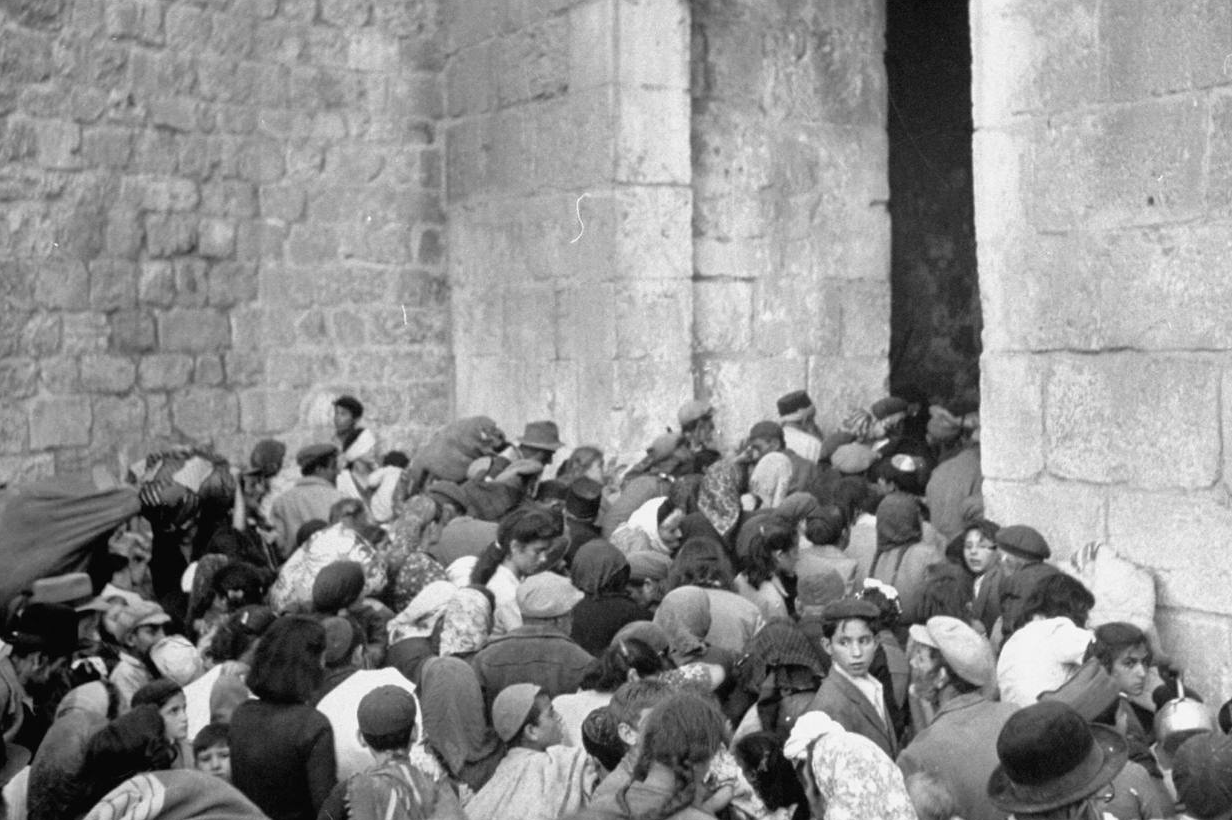
Khalil Sakakini was one of those who lost his home and his expansive library. His left-behind volumes ended up with 40,000 other “abandoned” books in the Israeli national library. But Sakakini’s departure to Ramallah was part of something bigger. The war set in train the terminal decline of Arab Christian Jerusalem, whose numbers began to plummet as its great Levantine trading families emigrated. Edward Said ended up in Manhattan.
Barbed wire divided Jerusalem into two severed almost monoethnic cities. On one side, West Jerusalem, the new capital of Israel, but mostly in name only as the Israeli economy and army were now run from Tel Aviv. And on the other, Jordanian East Jerusalem, pointedly not the capital of the Hashemite Kingdom it was promptly annexed to.
Zionist Jerusalem began in this enclave city, now cut off from the Old City by the new border. If this Jerusalem is summed up by anyone, it is by Teddy Kolleck, its mayor of 28 years. This man is what liberal Zionism was. Wearing a long topcoat and tie, Jerusalem’s mayor often looked more like the West German Chancellor Willy Brandt or Austria’s Bruno Kreisky than an Israeli politician. This Hungarian-born protégé of David Ben-Gurion, a social-democrat with European manners, became mayor of West Jerusalem in 1965 and oversaw the Zionist project for the city after the Six Day War when the Israeli cabinet, in a swell of emotion, annexed it.
Kolleck’s beautified Jerusalem is what many of Israel’s supporters imagine the country still is. But neither his city, nor his kind of Zionism, still truly exists. Demographically and sociologically, his Jerusalem has disappeared. Kolleck’s was a Left-leaning and secular Jewish Jerusalem, where ultra-orthodox Hareidim and Palestinians were a small minority. Its politics was dominated by the Israeli Labour Party, running the municipality alone.
This city no longer exists because Jerusalem, like Israel, is different from the West: it has grown more religious. By Kolleck’s death in 2007, it was evident that the post-1967 Zionist project for Jerusalem had failed. Despite the airy beauty of his Hezlian promenades, the city was neither united, internationally recognised, nor calm. And for all of Kolleck’s pride in his enlightened occupation, the policy of administering the Palestinians of East Jerusalem as “residents” without automatic citizenship had failed. The second intifada had begun with riots in their areas.
A cascade of suicide bombings reflected a broader defeat. Israel’s policy to maintain a decisive Jewish majority had failed. Demographically, the Palestinian population had soared, from 25% in 1967 to over 30%, not only despite great efforts to attract Jews to the city but the construction of 10 large neighbourhoods over the Green Line, the size of small cities elsewhere in Israel. In response, the Palestinians clung to their slum-like neighbourhoods — trapped by the occupation.
At the time of Kolleck’s death, more than a third of Jerusalem’s population were Haredi. Kolleck’s old mentor, Ben-Gurion, in the deals he struck to exempt the ultra-orthodox from mandatory military service, had viewed them as a fragment of a lost world that would fade away. Instead, their numbers and power surged. Zionism found itself facing a problem it had failed to address: the extreme difficulty of making a cohesive or functional nation with Jews.
Today, this unease is not only mirrored in the Israeli press, but in its television shows. The nostalgia for a vanished, Levantine, cosmopolitan Jerusalem, of Arab gentleman and British officers, can be found in The Beauty Queen of Jerusalem, which tells the story of a Sephardic family in the Old City. And to understand the Jerusalem that replaced it, we have Shtisel, a family drama set in the city’s Haredi world. Both befuddled leads are played by the same secular Tel Avivian actor, Michael Aloni, as if he is exploring both the city’s uncanny past and uncomfortable future.
In different ways, both confirm that the old Zionist Jerusalem is gone. Secular Israeli hegemony is over: the city is now 40% Palestinian, 35% percent Haredi and only a minority secular. Teddy Kolleck could never be elected here, in this Haredi-Likud bastion. But neither would Edward Said recognise it. Once associated with a certain refinement, Jerusalem is now the poorest city in Israel, where almost 40% of residents live below the poverty line, double the national average. It has gone from being a place secular Jews aspired to, to being a place they leave. Rabbi Shlomo’s walled-village has vanished and many of his secular descendants have left the city.
Nowhere do you feel the nature of today’s Jerusalem — a mostly Haredi-Palestinian conurbation — than trying to reach Ramallah by bus, when on the other side of the wall, the urban area, here tightly packed concrete, just continues. There were less than 350,000 people living in this land in the mid-19th century. Today there are roughly 14.5 million. In 40 years, there will be 30 million.
High-tech, secular Tel Aviv is the face Israel projects to the world, yet Jerusalem remains its true face. Not only the country’s biggest city but the one that reflects the state of the land. In “the bubble” of Tel Aviv, there are neither Haredim nor the occupation — whereas in Jerusalem, you feel them every day. More than this, though, it is the only place where Israelis and occupied Palestinians live together. This makes Jerusalem the inescapable site of its future.
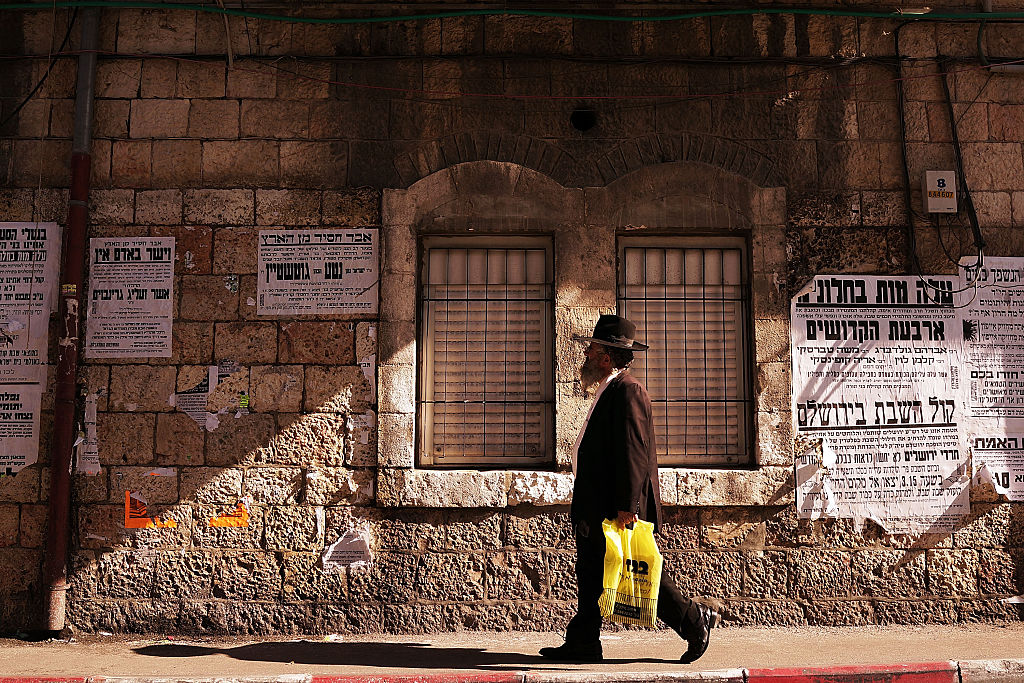
The debate over what this might look like has been playing out in the pages of the country’s liberal newspaper Haaretz, where “Why I’m leaving Jerusalem” is the equivalent of the New York Times’s “Why I’m leaving New York” column. The writer Chaim Levinson, for instance, sees Israel’s future dystopia in Jerusalem’s present. The city, he writes, once had DJs, alternative nights, notable restaurants and intellectuals. Now, it is “poor, ugly, boring, bereft of hope and a future”. For Levinson, Jerusalem’s drab and dirty Haredi neighbourhoods, where only synagogues and religious schools matter, is a foretaste of a failed start-up nation, sinking into Haredi poverty and fundamentalism. A place of fanatics trying to start a war over the Temple Mount.
This is not the view of Nir Hasson, for whom there is a “quiet revolution” underway in the city. From the corridors of the Hebrew University and David Yellin college to the wards and operating theatres of Hadassah hospital, life has become desegregated. The walls have fallen down. Palestinians from East Jerusalem are studying or working alongside Jews.
For Hasson, then, Israel’s shoots of hope can be found in Jerusalem. Instead of increasing religious coercion, there are now more restaurants and shops open than ever before in the city on Shabbat. Instead of seeing the Haredim in black and white, Hasson believes that the growing population is becoming more complicated and consumerist and many are secularising — which detailed demographic research in fact confirms. For him, Jerusalem shows coexistence is not a lost cause. Both Haredim and Palestinians are becoming “Israelised” — but in a way that does not conform to Zionism.
Jerusalem is both of these cities. But there are extremists trying to tip the scales, with some 3,000 settler-like activists, embedding around the Holy Basin, trying to bend the arc of the conflict towards conflagration.
Night after night in the Old City, I came to see it differently. It wasn’t the theme park for which tourists mistook it. This place was a chessboard of control — a battlefield of scuffles and brawls, title-deeds and court cases — where the kippah-wearing boy handing out tea under a camp light on the road to the Damascus Gate all night long was really a look out; where the new mezuzah, affixed to the door post on another Palestinian house these groups had purchased, was another blue dot on the board “reclaimed” for Israel.
This speaks to a growing seam of fundamentalism in Judaism — yearning for the Temple Mount. In 1967, the nation’s Rabbinate reaffirmed an ancient ban on Jews ascending lest they desecrate the ruins of the temple and Jewish prayer was formally discouraged by officials. But this is no longer a liberal Zionist Jerusalem. Today, a growing number of Jews are now visiting and praying at the site.
As Jewish extremists have focused on the mount, so have Palestinians. Over the past few years, a pattern has emerged of Arab rioters, fearful of half-imagined Jewish plans to erect their Third Temple, barricading themself in the Al-Aqsa Mosque only to be stormed by Israeli police. This, for Hamas, is central. Al Aqsa is at the heart of their message, ambitions and ideology. The war launched on October 7 was launched in the name of saving it.
Jerusalem is where the Israeli-Palestinian conflict began. The city today is where either a much darker one could start, or where it could end. That the streets of Jerusalem are still quiet after months of devastation is revealing. If there is any hope, it is that Arabs and Jews — in hospitals, malls and in offices — continue to work side by side. Normal people can turn, before their politicians, against violence.
On a winter’s night in 1920, Abraham Shalom Yahuda, the grandson of Rabbi Shlomo Yahuda who reached the holy city by caravan, gave a speech in the highest, most ornate, literary form of his native Arabic. Introduced by the city’s Palestinian mayor as a son of one of the most esteemed families in the city, his subject was the legacy of Jewish-Arab coexistence in Muslim Spain. A better future was only possible, said Yahuda, “when the spirit of tolerance and freedom that prevailed in the golden age of Arab thought in Al-Andalus will return”. At the time, he was dismissed by nationalists of all sides. But for me, he was the true realist. And only the people of Jerusalem — by wanting it — can open the way.
Disclaimer
Some of the posts we share are controversial and we do not necessarily agree with them in the whole extend. Sometimes we agree with the content or part of it but we do not agree with the narration or language. Nevertheless we find them somehow interesting, valuable and/or informative or we share them, because we strongly believe in freedom of speech, free press and journalism. We strongly encourage you to have a critical approach to all the content, do your own research and analysis to build your own opinion.
We would be glad to have your feedback.
Source: UnHerd Read the original article here: https://unherd.com/

